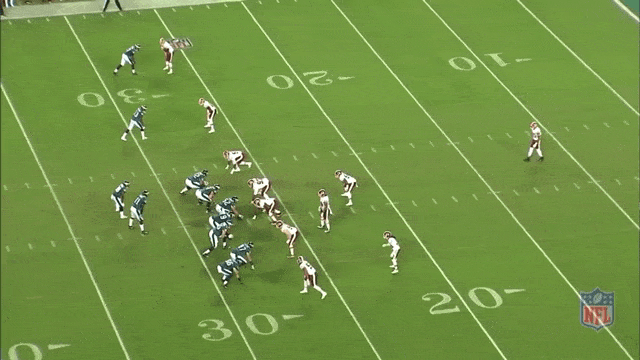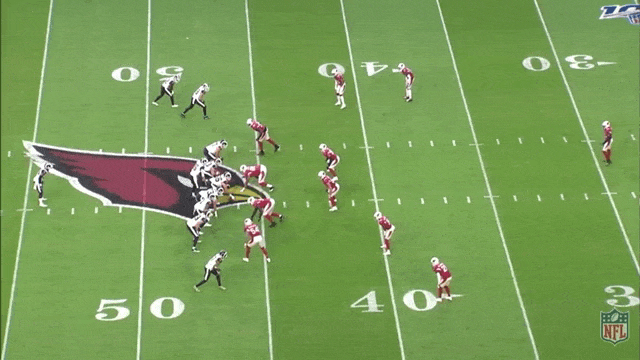You don’t have to look particularly hard if you want to find the NFL’s best tight ends.
Travis Kelce of the Kansas City Chiefs and George Kittle of the San Francisco 49ers remain in a class of their own. And even though Rob Gronkowski took a one-year hiatus, his place as one of the league’s best is still all but assured. Throughout their stellar careers, all three players have measured up to PFF’s most stable metric for pass-catching tight ends: the ability to separate and perform against man coverage.
Here, we will examine the next wave of the game’s best tight ends and look at how their production may vary against man- or zone-coverage schemes.
[Editor’s note: Subscribe to PFF ELITE today to gain access to PFF’s Premium Stats and new Player Grades experience in addition to the 2020 NFL Draft Guide, 2020 Fantasy Rookie Scouting Report, PFF Greenline, all of PFF’s premium article content and more.]
Tier 1: Prolific Record-Setters
George Kittle, San Francisco 49ers
Kittle has been lighting up the PFF database ever since he entered the league as a fifth-round pick three years ago. He has earned a PFF receiving grade of 92.5 since 2017, first among all qualifying tight ends over that span.
His tight ends coach, Jon Embree, helped to unlock Kittle’s aggression by instructing him to never run out of bounds and to use his 6-foot-4 250-pound frame to batter smaller defensive backs. He has used that physical presence to break more tackles (45) for more yards after the catch (1,748) than any other tight end since entering the league three years ago.
Kittle’s 2019 average of 3.12 yards per route run is the best mark ever recorded by a tight end who saw at least 50 targets over a single season. Kittle also produced a 94.4 receiving grade against man coverage last season — once again tops among players at his position — which firmly cements the 26-year-old tight end as the best player at his position entering the 2020 season.

Travis Kelce, Kansas City Chiefs
Over the last three seasons, no NFL tight end has made more big plays than Kelce. During that time, he has earned a receiving grade of 91.6 — second among qualifying tight ends over that period — and he leads all qualifying players at his position in receptions (283), receiving yards (3,603) and touchdowns (23).
Kelce has built a career on precision route running while generating more explosive plays of 15 plus yards (100) than any other tight end since 2017. Among players at his position who saw at least 50 targets when facing man coverage since 2017, Kelce has the league’s seventh-best separation rate of 60.8%, and his 92.6 receiving grade against man coverage is the best in the NFL over that time. Kelce is not scheme-dependent, though, as his versatility has also allowed him to produce the position’s second-highest receiving grade against zone coverage (90.9) over the last three seasons.
Rob Gronkowski, Tampa Bay Buccaneers
Even though he sat out the 2019 season, Rob Gronkowski’s 2.93 yards per route run against man coverage since 2017 is still good enough to hold up as the best mark over the last three seasons among qualifying tight ends.
During that same time, his 33 explosive plays of 15 plus yards against man coverage remain the position’s second-highest total, and he’s behind only Travis Kelce. What has made Gronk so special during his nine-year career is his ability to separate from man coverage by using his 6-foot-6, 265-pound frame to bang defenders off their spot.
He has an excellent pair of hands, and he increases his catch radius by repeatedly extending for the ball outside the framework of his body. His size, length and ball skills allow him to make difficult catches — in short, Gronk is always open.
Now, a rested and retooled Gronk will return for his 10th NFL season by joining Tom Brady in Tampa. Despite his absence last season and his relatively disappointing showing in 2018, Gronk’s production still compares favorably to Kittle’s and Kelce’s over the previous three seasons.
George Kittle vs. Travis Kelce vs. Rob Gronkowski: Receiving statistics since 2017 (regular season only)
| Stat | George Kittle | Travis Kelce | Rob Gronkowski |
| Offensive snaps | 2,323 | 2,836 | 1,742 |
| PFF receiving grade | 92.5 | 91.6 | 89.6 |
| PFF receiving grade vs. single coverage | 89.9 | 92.6 | 91.1 |
| PFF receiving grade vs. zone coverage | 93.3 | 90.4 | 80.9 |
| Separation percentage vs. single coverage | 55.6% | 60.8% | 37.1% |
| Yards per route run | 2.47 | 2.20 | 2.09 |
| Average depth of target | 7.1 | 9.4 | 12.2 |
| First down/touchdown percentage | 63.7% | 66.4% | 77.5% |
Tier 2: Man- And Zone-Beaters
Zach Ertz, Philadelphia Eagles
As I previously stated, a tight end’s ability to beat man coverage is the most stable metric when grading their potential impact on the passing game. And Philadelphia Eagles tight end Zach Ertz has the second-highest separation percentage (63.6%) against man coverage over the last three seasons. Ertz also ranks in the top 10 in receiving grade (79.6, ninth) and yards per route run (2.05, ninth) against zone coverage during the same period.
He is equally effective against zone and man coverages, where his combined skill set makes him an excellent fit for both schemes.
Ertz is a skilled route-runner who repeatedly wins separation by working to the edge of a man-coverage defender. He consistently wins leverage by forcing defenders out of their backpedal, where he will then work away from the defender as he turns his hips. His success is less about speed and more about timing and how to work a defender with footwork and fundamentals, but he remains one of the league’s best players at the position.

Darren Waller, Las Vegas Raiders
After playing in only 16 games between 2016-18, the Raiders saw Darren Waller explode last season. Waller finished the year with the sixth-best PFF receiving grade (86.8) among tight ends who saw at least 25 targets; he also finished second among all tight ends with 90 receptions and 29 explosive plays of 15 or more yards.
He may not have the polish of the more veteran players at his position, but his raw ability makes him a threat against both man and zone coverage. Here is a look at Waller’s production versus both man and zone coverage during his breakout season in 2019.
Darren Waller: Receiving statistics against man and zone coverage in 2019 and rank among tight ends with at least 25 targets (regular season only)
| Stat | Vs. man coverage | vs. zone coverage |
| PFF Receiving grade | 90.0 (3rd of 11) | 82.3 (7th of 33) |
| Yards per route run | 2.97 (1st of 11) | 2.47 (4th of 33) |
| YAC per reception | 9.0 (1st of 11) | 5.8 (11th of 33) |
| Explosive play percentage | 50.0% (2nd of 11) | 27.0% (12th of 33) |
| Separation percentage | 62.9% (8th of 11) | 85.5% (17th of 33) |
| Passer rating generated | 104.5 (5th of 11) | 100.8 (13th of 33) |
Mark Andrews, Baltimore Ravens
Since entering the league as a third-round pick in 2018, Baltimore Ravens tight end Mark Andrews has excelled against man coverage, where he has generated at least a step or more of separation on 51% of his 70 targets against those man-to-man schemes.
The 2017 Mackey Award winner continues to raise eyebrows with his A-rated production. Over the last two seasons, Andrews has earned a receiving grade of 91.6 against man coverage, second among tight ends with at least 50 targets over that span.
With his 6-foot-5 frame, Andrews has the vertical speed to attack athletic safeties in man coverage. Since 2018, he leads all tight ends with an average of 2.91 yards per route run, and he also leads the position with a 112.3 passer rating when targeted against man coverage.
Tier 3: Scheme-Dependent Zone-Beaters
Tyler Higbee, Los Angeles Rams
Last season, Tyler Higbee became an integral part of a Los Angeles Rams offense that seemed to have forgotten their tight ends. From 2017-18, Higbee appeared in all 32 games and was targeted only 71 times. He collected just 49 receptions for just 587 yards at an average of just 1.20 yards per route run, 24th among 72 qualifying tight ends.
Last season, Higbee saw his role increase in the Rams offense, and he went on to haul in 69 of his 86 targets for 734 yards across his 16 games. He ended the season with an average of 2.60 yards per route run that ranked third among tight ends who saw at least 25 targets.
This spike in production can be attributed to the Rams expanding their offense to include tight ends as a more prominent feature in their passing game. Higbee’s production has mostly come against zone coverage, where last season he earned a 92.0 passing grade, the second-best figure among qualifiers. He also ranked among the top five players at his position in yards per route run (3.53, second) and explosive plays of 15-plus yards (13, second) when facing zone coverages.
His spacial awareness and feel for zone coverage are evidenced by his 68% separation rate versus zone coverage over the last three seasons, but it’s also more than worth noting that his 57.1% separation rate against man coverage is a mightily impressive figure, too. Looking forward to 2020, I expect Higbee’s production to soar in what will be his fifth season in the NFL.

Hunter Henry, Los Angeles Chargers
Henry may have missed all of 2018 with an ACL injury, but he bounced back to make 2019 the most productive season of his young career.
While the Chargers’ offense declined from the year before, Henry’s contribution to the passing game earned the 10th-best receiving grade (78.4) among tight ends against zone coverage in 2019.
The first order of business for a receiver to excel against a zone defense is to know his place in the order of the passing progression. Henry has developed into a knowledgeable receiving tight end, one who hits his landmarks with perfect timing and depth in the passing progression. His execution against zone schemes last season produced a league-leading average depth of target (9.9 yards) and a fourth-ranked 11 explosive plays of 15-plus yards.
Expectations for an even greater contribution from Henry in 2020 can not be overstated, and not even the Chargers’ uncertainty at quarterback will serve as an excuse for Henry missing his mark.
Austin Hooper, Cleveland Browns
Hooper is coming off a breakout year in which he recorded career-high marks in receiving grade (80.5), receptions (75), yards (787), first downs (41) and touchdowns (six), which no doubt helped the Cleveland Browns and new head coach Kevin Stefanski feel comfortable with awarding Hooper with a four year, $42 million deal.
However, Hooper’s career year was largely determined by the coverage schemes he played against. Simply put, he feasted on zone defenses a season ago, earning the position’s fourth-best receiving grade (89.5) and generating an average of 2.22 yards per route run (eighth) against zone schemes. Altogether, 635 of his 787 receiving yards and 59 of his 75 catches came against some form of zone coverage.
During his last three seasons in Atlanta, however, Hooper managed just a 29th-ranked receiving grade of 58.9 against single-man coverage despite having the fourth-best separation rate (62.3%) among tight ends who were targeted at least 50 times over that period.
Stefanski’s offense will be tailor-made for Hooper and his ability to find the soft areas in zone coverage, where he has outperformed every tight end selected in his 2016 draft class. Among that group — which includes both Tyler Higbee and Hunter Henry — Hooper ranks first in receiving yards (1,761), receptions (154), explosive plays (34) and total catches for first downs or touchdowns (71) against zone defenses.
Honorable Mentions
Kyle Rudolph, Minnesota Vikings
O.J. Howard, Tampa Bay Buccaneers
Dallas Goedert, Philadelphia Eagles



 © 2025 PFF - all rights reserved.
© 2025 PFF - all rights reserved.